Effects of furosemide and tadalafil in both conventional and nanoforms against adenine-induced chronic renal failure in rats
- PMID: 35820963
- PMCID: PMC9275182
- DOI: 10.1186/s40001-022-00747-3
Effects of furosemide and tadalafil in both conventional and nanoforms against adenine-induced chronic renal failure in rats
Abstract
Background: Chronic renal failure (CRF) is a progressive loss of renal function that lead to reduced sodium filtration and inappropriate suppression of tubular reabsorption that ultimately leads to volume expansion. The aim of this study was to study the efficacy of furosemide and tadalafil nanoforms compared to conventional forms against adenine-induced CRF rat-model.
Methods: Addition of 0.75% adenine to the diet of rats for 4 weeks gained general acceptance as a model to study kidney damage as this intervention mimicked most of the structural and functional changes seen in human chronic kidney disease Urine analysis, histopathological changes and immunohistochemical expression of caspase-3 and interleukin-1 beta (IL-1β) in renal tissues were performed.
Results: Our results showed that the combination of tadalafil and furosemide using conventional and nanoparticle formulations had better renoprotective effect than individual drugs. This was demonstrated by improvement of urinary, serum and renal tissue markers as indicative of organ damage. This was also reflected on the reduction of tubular expression of kidney injury molecule-1 (KIM-1) and neutrophil gelatinase-associated lipocalin (NGAL). Immunohistochemical studies showed that the deteriorated renal cellular changes indicated by increased expression of caspase-3 and IL-1β were greatly improved by the combined treatment particularly with the nanoforms.
Conclusions: The nanoforms of both furosemide and tadalafil had greater renopreventive effects compared with conventional forms against adenine-induced CRF in rats.
Keywords: Adenine–CRF in rats; Caspase-3; Furosemide; IL-1β; NGAL; Nanoparticles; Tadalafil.
© 2022. The Author(s).
Conflict of interest statement
The authors declare that they have no competing interests.
Figures
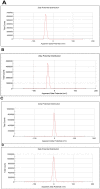
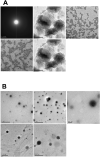

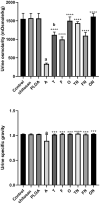


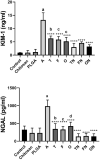
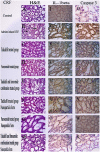
Similar articles
-
Sildenafil and furosemide nanoparticles as a novel pharmacological treatment for acute renal failure in rats.Naunyn Schmiedebergs Arch Pharmacol. 2024 Oct;397(10):7865-7879. doi: 10.1007/s00210-024-03128-1. Epub 2024 May 15. Naunyn Schmiedebergs Arch Pharmacol. 2024. PMID: 38748227 Free PMC article.
-
Adenine model of chronic renal failure in rats to determine whether MCC950, an NLRP3 inflammasome inhibitor, is a renopreventive.BMC Nephrol. 2023 Dec 19;24(1):377. doi: 10.1186/s12882-023-03427-4. BMC Nephrol. 2023. PMID: 38114914 Free PMC article.
-
Protective effects of Salvia miltiorrhiza on adenine-induced chronic renal failure by regulating the metabolic profiling and modulating the NADPH oxidase/ROS/ERK and TGF-β/Smad signaling pathways.J Ethnopharmacol. 2018 Feb 15;212:153-165. doi: 10.1016/j.jep.2017.09.021. Epub 2017 Oct 12. J Ethnopharmacol. 2018. PMID: 29032117
-
The effect of activated charcoal on adenine-induced chronic renal failure in rats.Food Chem Toxicol. 2014 Mar;65:321-8. doi: 10.1016/j.fct.2013.12.038. Epub 2014 Jan 10. Food Chem Toxicol. 2014. PMID: 24412558
-
Functional and histological effects of Anthurium schlechtendalii Kunth extracts on adenine-induced kidney damage of adult Wistar rats.Toxicon. 2023 Sep;233:107272. doi: 10.1016/j.toxicon.2023.107272. Epub 2023 Aug 29. Toxicon. 2023. PMID: 37652102 Review.
Cited by
-
Impact of tadalafil on cardiovascular and organ dysfunction induced by experimental sepsis.Acute Crit Care. 2025 Feb;40(1):46-58. doi: 10.4266/acc.002904. Epub 2025 Feb 12. Acute Crit Care. 2025. PMID: 39978956 Free PMC article.
-
Evaluation of the therapeutic potential of novel nanoparticle formulations of glutathione and virgin coconut oil in an experimental model of carbon tetrachloride-induced liver failure.BMC Pharmacol Toxicol. 2024 Oct 8;25(1):74. doi: 10.1186/s40360-024-00795-x. BMC Pharmacol Toxicol. 2024. PMID: 39380023 Free PMC article.
-
Sildenafil and furosemide nanoparticles as a novel pharmacological treatment for acute renal failure in rats.Naunyn Schmiedebergs Arch Pharmacol. 2024 Oct;397(10):7865-7879. doi: 10.1007/s00210-024-03128-1. Epub 2024 May 15. Naunyn Schmiedebergs Arch Pharmacol. 2024. PMID: 38748227 Free PMC article.
-
A novel nanoparticle glutathione and Lepidium sativum treatment for gentamicin-induced acute renal failure in rats.Sci Rep. 2025 Jun 20;15(1):20158. doi: 10.1038/s41598-025-05385-3. Sci Rep. 2025. PMID: 40542040 Free PMC article.
-
Personalized Music Therapy for Elderly Patients with Chronic Renal Failure to Improve their Quality of Life and Mental Health: A Retrospective Study.Noise Health. 2024 Jan-Mar 01;26(120):8-13. doi: 10.4103/nah.nah_94_23. Epub 2024 Mar 23. Noise Health. 2024. PMID: 38570304 Free PMC article.
References
-
- Diwan V, Brown L, Gobe GC. Adenine-induced chronic kidney disease in rats. Nephrology. 2018;23(1):5–11. - PubMed
-
- Guazzi M. Clinical use of phosphodiesterase-5 inhibitors in chronic heart failure. Circ Heart Fail. 2008;1:272–280. - PubMed
-
- Sohotnik R, Nativ O, Abbasi A, Awad H, Frajewicki V, Bishara B, et al. Phosphodiesterase-5 inhibition attenuates early renal ischemia-reperfusion-induced acute kidney injury: assessment by quantitative measurement of urinary NGAL and KIM-1. Am J Physiol Renal Physiol. 2013;304(8):99–104. - PubMed
-
- Kyriazis I, Kagadis GC, Kallidonis P, Georgiopoulos I, Marazioti A, Geronasiou A, et al. PDE5 inhibition against acute renal ischemia reperfusion injury in rats: does vardenafil offer protection? World J Urol. 2013;31(3):597–602. - PubMed
MeSH terms
Substances
LinkOut - more resources
Full Text Sources
Medical
Research Materials
Miscellaneous

